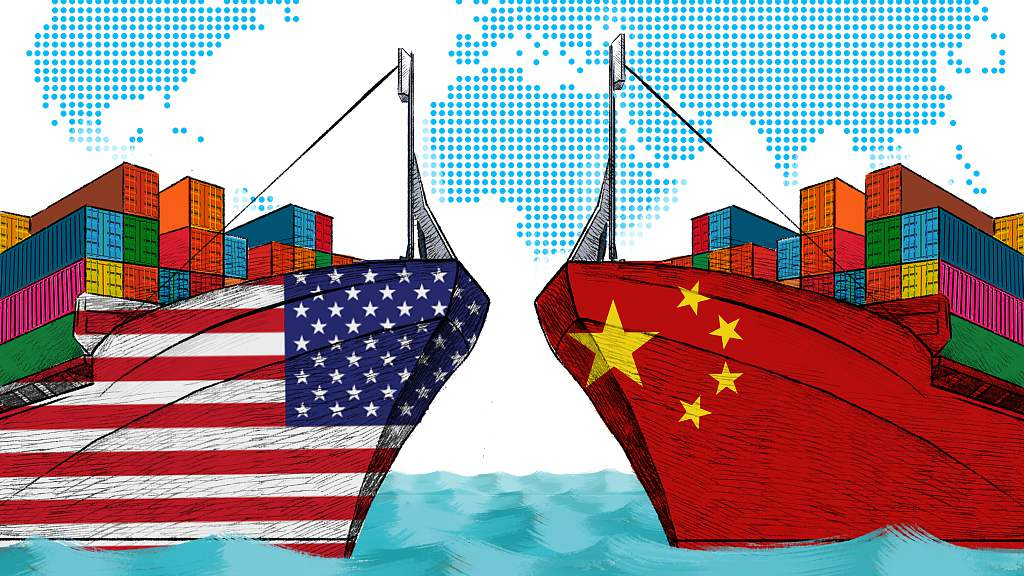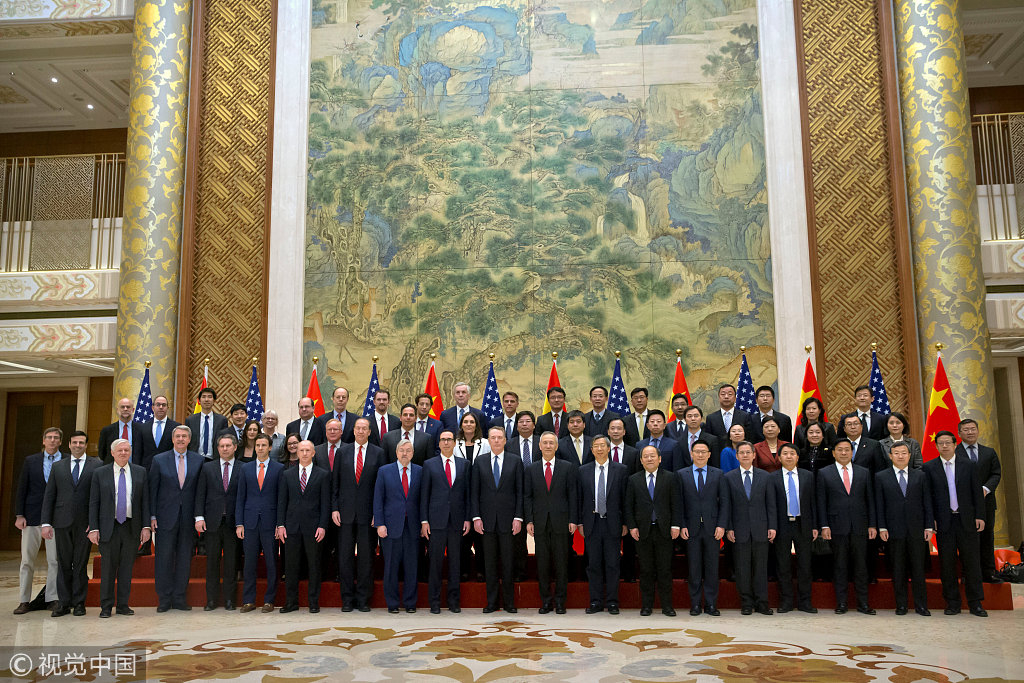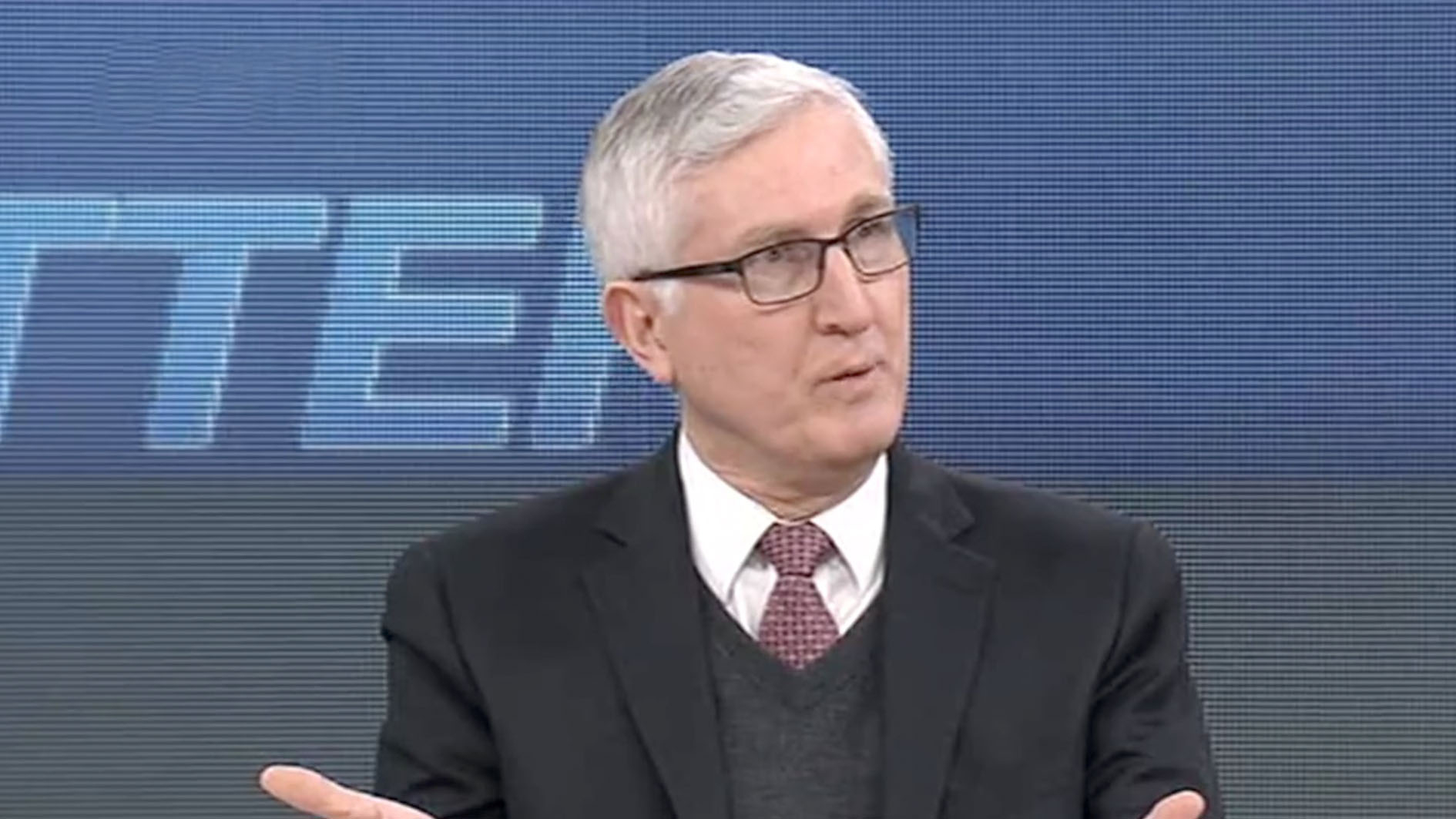
TV Show
14:29, 16-Feb-2019
China and U.S., both play a different kind of 'football'
Dialogue with Yang Rui
00:48

After two weeks since Chinese Vice Premier Liu He finished his visit to the U.S., the latest round of Sino-U.S. trade talks wrapped up in Beijing on February 15 with a positive tone.
According to Xinhua News Agency, China and the U.S. reached consensus in principle on key issues, and they agreed to continue trade talks next week in Washington DC. On the same day, Chinese President Xi Jinping met with U.S. Trade Representative Robert Lighthizer and Treasury Secretary Steven Mnuchin, during which Xi highlighted the negotiations had made important progress.

Members of U.S. and Chinese trade negotiation delegations pose for a group photo at the Diaoyutai State Guesthouse in Beijing, China, February 15, 2019. /VCG Photo
Members of U.S. and Chinese trade negotiation delegations pose for a group photo at the Diaoyutai State Guesthouse in Beijing, China, February 15, 2019. /VCG Photo
Talking of the possible outcomes of these trade talks, Liu Zinqin, senior fellow of the Chongyang Institute for Financial Studies at the Renmin University of China, expressed his optimism.
Liu said that it is unlikely for both sides to cross the red line of each other, which means they would like to compromise as long as their core interests are not touched.
Timothy Stratford, the managing partner from Covington and Burling LLP, in Beijing believes that the deadline will be postponed because President Trump said he is willing to talk to President Xi face to face to settle the final agreement. And it is clear that there is not enough time to prepare this talk before the deadline, so the best guess is that truce between China and the U.S. will be extended until after March.
But the perfect deal may not appear, according to Stratford, the U.S. and China are now in the process of redefining some of the ways in doing business with each other, and there are three different areas where both countries are now re-calibrating and understanding between them.
The first area is economic policies. Both countries need to accept the different systems on either side, which is not easy to do. And they also need to take national security issues into account, because business dealings could affect national security.
In addition, the U.S. has decided to take a more active role in law enforcement, which means a lot of disputes will be solved under the laws and rules, such as IP theft rules, sanction rules and anti-corruption, etc. Of course, these rules will play a vital role in the future and may be used against Chinese companies and others.
01:16

To illustrate the differences, Timothy Stratford compares Sino-U.S. trade to a football match. But with different assumptions on either side: one side arrives ready to play American football, the other side is expecting English football.
American football teams play with protective clothing, so they can crash into each other. The other side has no padding and expects to play football in a very different manner, with different rules. But in this case, it seems, both sides say the other is employing excessive protection. And that is the fundamental problem.
In Stratford's opinion, due to the differences, there are still great uncertainties in trade issues which can't be resolved immediately by a two-day negotiation. There will be a period of adjustment for months ahead, and both sides are working hard to get more clarity as the talks go along.
(If you want to contribute and have specific expertise, please contact us at opinions@cgtn.com.)

SITEMAP
Copyright © 2018 CGTN. Beijing ICP prepared NO.16065310-3
Copyright © 2018 CGTN. Beijing ICP prepared NO.16065310-3